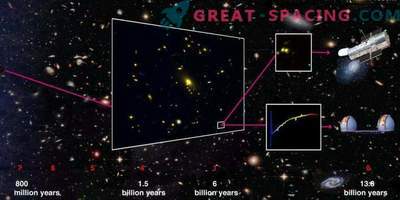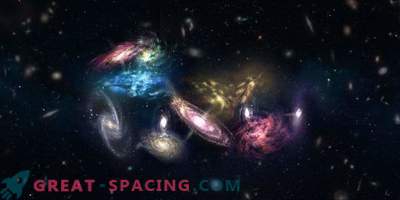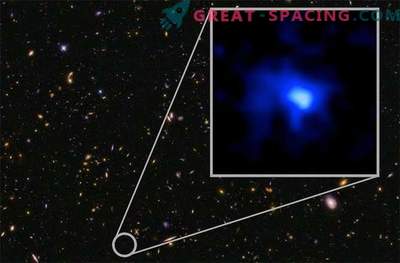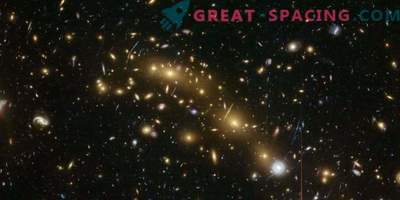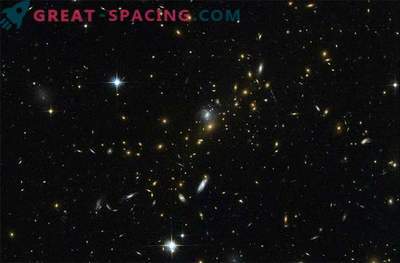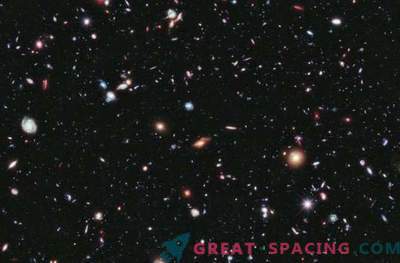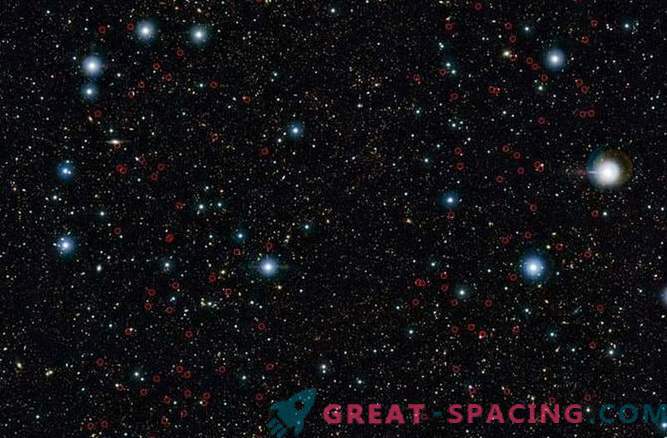
Astronomers have discovered something strange on the far reaches of our observable universe: a huge number of massive galaxies - which should not be.
Depending on the wavelength, you observe a different Universe, and various celestial objects and cosmic phenomena appear differently. This rule is especially relevant when you look deep into the Universe - the farther you look, the deeper you travel back in time. As the universe expands, the most ancient light that travels vast distances is the most difficult to notice.
This nature of space-time becomes clear when looking at an object in infrared light - the light has such a red shift that only infrared observatories can see a faint glow in the most remote corners of the cosmos.
In order to identify galaxies that remained hidden from our eyes at such great distances, a powerful infrared telescope called the Vista and Infrared Survey Telescope for Astronomy at the Paranal Observatory, Chile, revealed some of the youngest galaxies found to date. Galaxies that were born only a billion years after the Big Bang. But there is something strange: there are too many of them and they are huge!
When you look into the distant past of our Universe, the light generated by stars that originated almost 13 billion years ago is very difficult to detect. Thus, when searching for the most ancient galaxies, we can only notice the brightest of them. But looking at the previously studied portion of the sky as part of the UltraVISTA study and combining with longer-wavelength infrared data collected by the NASA Spitzer space telescope, astronomers discovered hundreds of previously unidentified galaxies. “We found 574 massive galaxies — the largest number of hidden galaxies in the early Universe,” said Karina Kaputi from the Kronte Astronomical Institute at the University of Groningen. "Studying them will answer a simple but important question: when did the first massive galaxies appear?"
It is assumed that these galaxies were formed no earlier than about 1 billion years after the Big Bang. Scientists doubt that massive galaxies could form before that time.
"We did not find any evidence of earlier massive galaxies formed about one billion years ago after the Big Bang, so we are sure that these are the first found galaxies," said Henry Joy McCracken of the Paris Institute of Astrophysics.
But this discovery is a contradiction in modern models of the formation of galaxies - these massive ones simply should not exist. These monsters are about half the size of galaxies that existed between 1, 1 and 1, 5 billion years after the Big Bang. Models predict that only small galaxies could exist at that time.
Moreover, according to the ESO press release, these large galaxies contain an enormous amount of dust. This is another contradiction with modern models of the formation of galaxies.
So what happens there? We have a fundamental problem with our theories of galaxy formation, and we need to get a clearer picture of these huge galaxies. This discovery may eventually make a revolution in the mechanisms of star formation and evolution of galaxies. Currently, astronomers have turned to the Atakam Large Millimeter / Submillimeter Grid for answers. The observatory will try to test VISTA and Spitzer observations, adding another look at the study. Then, the ESO's 39-meter European Extremely Large Telescope (E-ELT), which is planned to be built by 2024, will be used.
In order to understand these monsters from the depths of space, we must use the most advanced modern observatories in the world. Only then can we understand how these galaxies evolved at the dawn of time.
